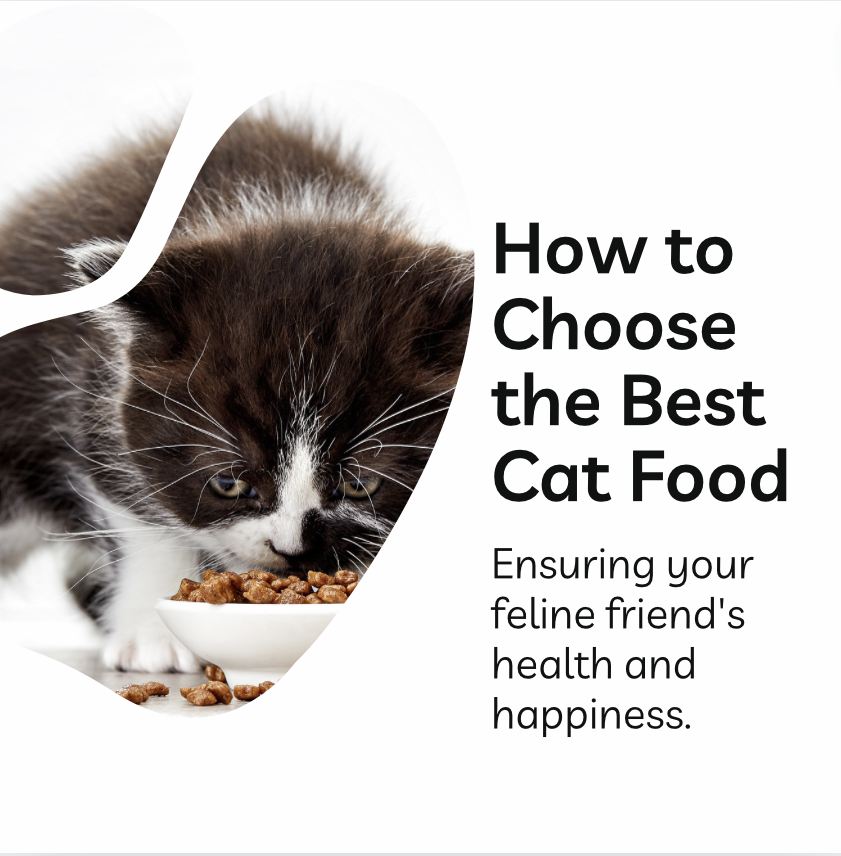Choosing the Best Brand of Cat Food: A Guide to Feline Nutrition
Selecting the right cat food is crucial for the health and well-being of your feline companion. With numerous brands and varieties available, navigating the options can be overwhelming. Here’s a comprehensive guide to help you choose the best brand of cat food for your cat:
1. Understand Your Cat’s Nutritional Needs
Before diving into specific brands, it’s essential to understand your cat’s nutritional requirements. Cats are obligate carnivores, meaning they require a diet rich in animal proteins. Look for cat foods that list a high-quality protein source, such as chicken, turkey, or fish, as the first ingredient. Additionally, cats need essential amino acids like taurine and arginine, vitamins (especially A and D), and minerals like calcium and phosphorus.
2. Check the AAFCO Label
The Association of American Feed Control Officials (AAFCO) sets standards for pet food in terms of nutritional adequacy. Look for cat foods labeled with “complete and balanced” for your cat’s life stage (e.g., kitten, adult, senior). This ensures that the food meets minimum nutrition requirements established by veterinary nutritionists.
3. Consider Wet vs. Dry Food
Both wet and dry cat food can be nutritious, but they have different benefits. Wet food typically has higher moisture content, which can help with hydration, especially for cats that don’t drink enough water. Dry food, on the other hand, may be more convenient and can contribute to dental health by reducing plaque buildup. Some cat owners opt for a combination of both to provide variety and meet their cat’s preferences.
4. Read Ingredient Labels
Ingredients are listed in descending order by weight. Choose cat foods that have named meat sources (e.g., chicken meal, salmon) rather than vague terms like “meat by-products.” Avoid foods with excessive fillers, artificial colors, flavors, and preservatives. Look for natural antioxidants like vitamin E (tocopherols) instead of chemical preservatives like BHA, BHT, or ethoxyquin.
5. Consider Your Cat’s Specific Needs
Some cats may have specific dietary needs due to health conditions such as allergies, kidney disease, or obesity. Consult with your veterinarian to determine if your cat requires a special diet and which brands or formulations are suitable. There are specialized cat foods designed to address these conditions, such as hypoallergenic diets, urinary health formulas, or weight management foods.
6. Research and Compare Brands
Research different cat food brands by visiting their websites, reading reviews from reputable sources, and consulting with your veterinarian. Look for brands that have a good reputation for quality control, sourcing ingredients responsibly, and conducting feeding trials to ensure nutritional adequacy.
7. Consider Price vs. Quality
While price is a consideration, prioritize quality and nutritional value over cost. High-quality cat foods may be more expensive, but they often provide better nutrition and fewer fillers, leading to improved overall health and potentially lower veterinary costs in the long run.
8. Introduce New Food Gradually
When transitioning to a new cat food brand or formula, do so gradually over 7-10 days to prevent digestive upset. Mix increasing amounts of the new food with decreasing amounts of the old food until the transition is complete.
9. Monitor Your Cat’s Response
After switching to a new cat food, monitor your cat’s health and well-being closely. Look for changes in appetite, coat quality, energy levels, and litter box habits. If you notice any concerning symptoms, consult your veterinarian promptly.
10. Seek Professional Advice
Ultimately, your veterinarian is your best resource for selecting the best brand of cat food for your cat. They can provide personalized recommendations based on your cat’s age, health status, activity level, and dietary preferences.
Choosing the best brand of cat food is a decision that directly impacts your cat’s health and happiness. By understanding their nutritional needs, reading labels carefully, and considering individual factors, you can make an informed choice that supports your cat’s overall well-being for years to come.



